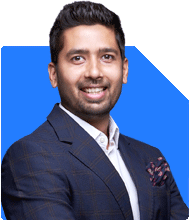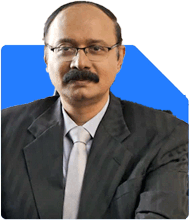Ramalingam Kalirajan |10893 Answers |Ask -Follow
Mutual Funds, Financial Planning Expert - Answered on May 11, 2024
He has an MBA in finance from the University of Madras and is a certified financial planner.
He is the director and chief financial planner at Holistic Investment, a Chennai-based firm that offers financial planning and wealth management advice.... more

I intend to quit job very shortly and will have a Corpus of 1.25 crores and regular monthly pension of Rs.75k form work. Should I put invest in conservative Fd or MF. I am 51 years old without any liability or responsibility.
Given your circumstances, a conservative approach to investing seems prudent. Fixed Deposits (FDs) offer stability and are a safe haven for your funds. They guarantee returns, albeit modest ones, shielding your corpus from market volatility.
Mutual Funds (MFs), on the other hand, can potentially offer higher returns but come with market risks. Actively managed funds, in particular, can be tailored to suit your risk tolerance and financial goals.
However, considering your imminent retirement and the need for stability, a mix of both FDs and carefully chosen mutual funds could be beneficial. You could allocate a portion of your corpus to FDs for stability and liquidity while investing the rest in MFs for potential growth.
Moreover, as a Certified Financial Planner, I'd recommend diversifying across different MF categories to spread risk. Equity-oriented balanced funds or debt funds with a track record of consistent returns could be suitable options.
Regular reviews of your portfolio with a professional can ensure it stays aligned with your financial goals and risk tolerance. Additionally, consider factors like taxation and inflation while making investment decisions.
Remember, transitioning into retirement is a significant life change, both financially and emotionally. Ensure you have a solid financial plan in place to support your lifestyle and aspirations during this phase.
Best Regards,
K. Ramalingam, MBA, CFP,
Chief Financial Planner,
www.holisticinvestment.in
You may like to see similar questions and answers below
Ramalingam Kalirajan |10893 Answers |Ask -Follow
Mutual Funds, Financial Planning Expert - Answered on Apr 18, 2024
Sanjeev Govila | Answer |Ask -Follow
Financial Planner - Answered on Sep 20, 2023
Kirtan A Shah | Answer |Ask -Follow
MF Expert, Financial Planner - Answered on Aug 30, 2023
Ramalingam Kalirajan |10893 Answers |Ask -Follow
Mutual Funds, Financial Planning Expert - Answered on Jul 16, 2024
Ramalingam Kalirajan |10893 Answers |Ask -Follow
Mutual Funds, Financial Planning Expert - Answered on Dec 15, 2025
Ramalingam Kalirajan |10893 Answers |Ask -Follow
Mutual Funds, Financial Planning Expert - Answered on Dec 15, 2025
Radheshyam Zanwar |6746 Answers |Ask -Follow
MHT-CET, IIT-JEE, NEET-UG Expert - Answered on Dec 15, 2025
Ramalingam Kalirajan |10893 Answers |Ask -Follow
Mutual Funds, Financial Planning Expert - Answered on Dec 15, 2025
Ramalingam Kalirajan |10893 Answers |Ask -Follow
Mutual Funds, Financial Planning Expert - Answered on Dec 15, 2025
Ramalingam Kalirajan |10893 Answers |Ask -Follow
Mutual Funds, Financial Planning Expert - Answered on Dec 15, 2025
Samraat Jadhav |2508 Answers |Ask -Follow
Stock Market Expert - Answered on Dec 15, 2025
Ramalingam Kalirajan |10893 Answers |Ask -Follow
Mutual Funds, Financial Planning Expert - Answered on Dec 15, 2025
Reetika Sharma |425 Answers |Ask -Follow
Financial Planner, MF and Insurance Expert - Answered on Dec 15, 2025
Radheshyam Zanwar |6746 Answers |Ask -Follow
MHT-CET, IIT-JEE, NEET-UG Expert - Answered on Dec 15, 2025

























